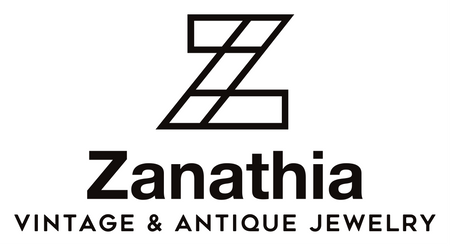

After the first Industrial Revolution boom and the invention of mass production, many business firms created catalogs to show their customers the various options and large quantities ready to be bought or commissioned. Jewelry collections were growing, and innovations like electroplating made creating specific jewelry designs more accessible and cost-effective. The Victorian lady or gentleman could now choose between various intricately detailed scarf pins, watch fobs, chatelaines, rings, necklaces, earrings, bracelets, and more. One could have a piece monogrammed as a gift and choose between variations that were not easily accessible beforehand. A person could look at a jewelry catalog from their living room or bedroom, an option that only existed for some civilians in the pre-mass production eras.

Waltham Watch Company catalog, 1911. Publisher: The American Lithograph Company. The Waltham Watch Company was created in Waltham, Massachusetts, and founded in 1880. The company produced millions of watches in the Victorian Era and early 20th century. The original manufacturing buildings have been preserved as the American Waltham Watch Company Historic District. The catalog above includes details regarding Waltham's watch parts and manufacturing process, which is used to appeal to the Edwardian reader at the time of its publication. https://archive.org/details/walthamwatchesso00walt/page/19/mode/2up?view=theater

Ladies' solid gold stem-winding watches from the 1888 E.V. Roddin Catalog. The intricately designed stem-winding watches featured 14 and 18-carat gold cases with various styles to select from. The Victorians could select fully engraved bird and floral etchings, landscape artwork, and Japanese inspired. https://archive.org/details/EVRoddinCoCatalogue1888/EVRoddin-1888-RTL021926-LowRes/page/n17/mode/2up?view=theater
Antique jewelry catalogs also serve as an educational tool to review a company's history and authenticate its markings, business addresses, and designs. There are thousands of antique jewelry catalogs from the 19th and early 20th centuries many digitized archives available to the public. Archive.org has a vast collection of antique jewelry catalogs and an excellent reference for analyzing specific material culture, trends, and businesses in historical periods. Although print catalogs are no longer the primary source for viewing and purchasing jewelry, they are still a remarkable tool for the authentication, education, and fascination of antique jewelry. They can also be used to connect historical events and innovations with the jewelry trends of the era. For example, we can view the first quantities of electroplated pieces introduced to the masses or garnet jewelry imported to America from the now-dissolved Bohemia region, present-day Czechoslovakia. We can study the firms and specific periods related to significant historical places, events, and innovations. Perhaps centuries from now, future archivists and preservationists can use antique jewelry catalogs and be in awe of what our ancestors wore, just like we are now.

